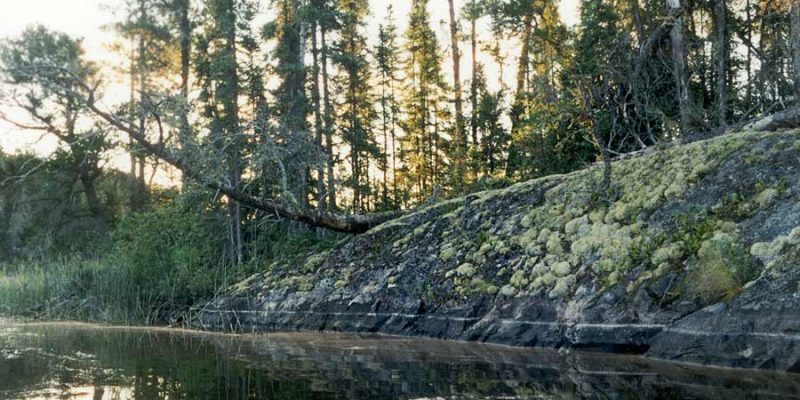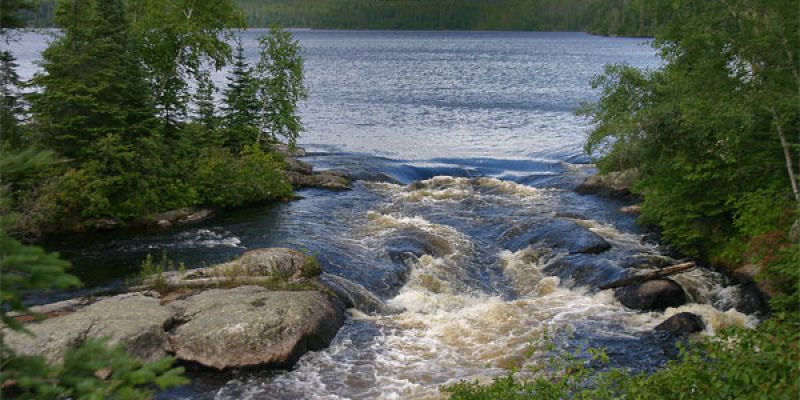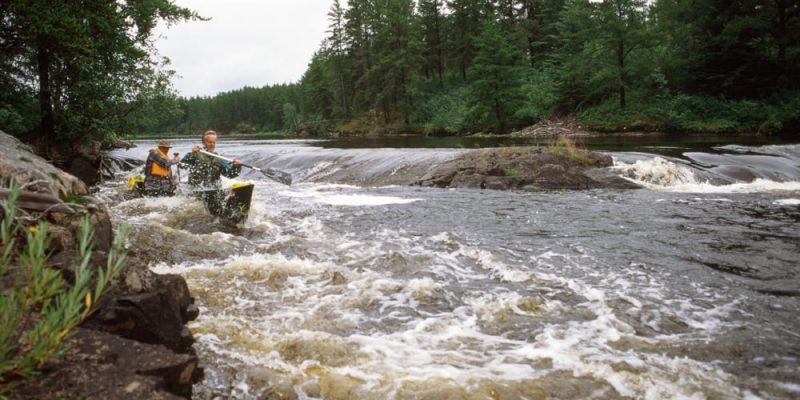Some of Canada’s most navigable, and yet rugged, rivers are concentrated in “Le Petit Nord,” the section of Manitoba East of Lake Winnipeg, so named by the Voyageur fur-traders of the late 1700s. There is plenty of flatwater paddling, but the rivers are the showpieces: The Bloodvein, a Canadian Heritage River, and its neighbors expand as they descend from Ontario to Lake Winnipeg. Some rivers, like most of the Leyond, are good introductions to whitewater, while others, like the Pigeon, are primarily exciting rapids for the experienced paddler. Geographically the heart of Canada, Manitoba captures the essence of the country’s landscape, from prairie to tundra, and its spirit, in the many native artifacts and spiritual places along its waterways. In addition to the area’s Rivers & Streams, Atikaki Provincial Park continues the remote wilderness of Ontario’s Woodland Caribou Park, while Nopiming Provincial Park provides convenient access to the “Little North.”
Canoeing Eastern Manitoba
PLACES TO PADDLE

Atikaki Provincial Wilderness Park is known for the Bloodvein River, a Canadian Heritage River, but with 1 million acres (400,000 ha) contiguous to Woodland Caribou Park in Ontario, there are many other lakes and rivers on their way to Lake Winnipeg to explore. Traveling the ancient waterways you ...
READ MORE +
Nopiming, an Ojibwe word, means “entrance to the wilderness;” a portal into the Canadian Shield, characterized by the same Boreal forest and ancient granite as its neighbors, Atikaki and Woodland Caribou Provincial Parks. Nopiming is designated as a “natural” park however, as opposed to a ...
READ MORE +
Nopiming and Atikaki Provincial Parks, which adjoin Woodland Caribou Provincial Park in Ontario, create a vast wilderness area crossed by rivers on their way to Lake Winnipeg. These rivers, like the Bloodvein and the Leyond, get most of the canoe traffic in the area, but outside of these major ...
READ MORE +







